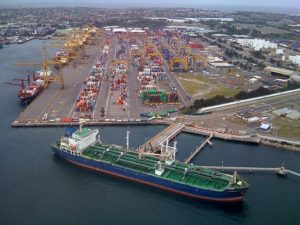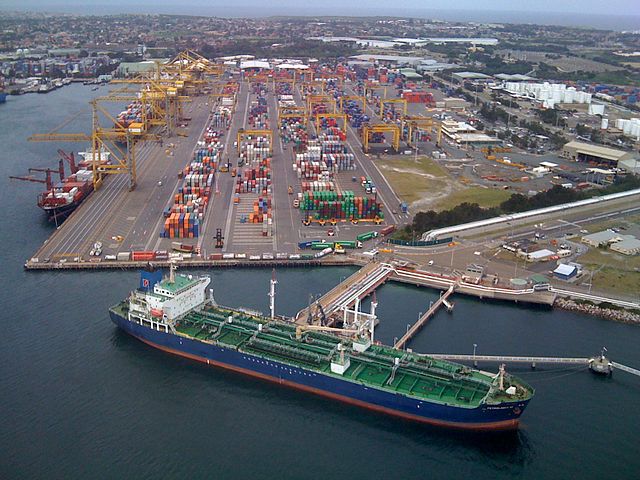 The transport sector is looking to Asia-Pacific as the key market for investment over the next five years, according to “The Way Ahead Transport Survey 2016” report from global law firm Norton Rose Fulbright.
The transport sector is looking to Asia-Pacific as the key market for investment over the next five years, according to “The Way Ahead Transport Survey 2016” report from global law firm Norton Rose Fulbright.
“The transport sector is continuing to look to Asia Pacific for investment opportunities, encouraged by rising demand and China’s ambitious Belt and Road initiative, a modern day silk road which will improve China’s infrastructure links with the rest of the world,” said Harry Theochari, global head of transport at Norton Rose Fulbright.
Respondents from the aviation and rail industries indicated strong confidence, owing to lower oil prices, the availability of funding, and the impact of infrastructure improvements, but the shipping industry remains the least optimistic as a result of overcapacity in many subsectors of the market.
Said Theochari: “Sentiment is high in the aviation and rail industries, buoyed by the expectation of increased passenger numbers. However, shipping continues to feel the effects of overcapacity in many markets, and an increase in enforcement actions is widely predicted, although in the longer term respondents believe conditions will improve.”
Over half (52%) of all respondents to the survey agree that a global recession poses the greatest threat to their industry.
“While respondents are most fearful of the impact of a worldwide recession, they will be watching closely the implications of the UK’s referendum result. The transport sector is international and highly regulated and any UK exit from the EU would need to take into account a number of complex issues,” said Theochari.
However, despite political uncertainty, most respondents agree that the transport sector can expect to enjoy further growth over the next five years. Rising passenger numbers and freight volumes are anticipated (by 73%) and an increase in the number of routes and services is expected (52%).
China and India are the most popular jurisdictions for investment, followed by the U.S., with growth through consolidation viewed as the best investment opportunity currently.
Investment in technology is expected to rise, according to 67%, with low-carbon technology and predictive analytics expected to represent the most significant driver of change in the transport sector over the next five years.
“The adoption of new technology in particular will help to address numerous issues the sector has been grappling with in recent years, such as low carbon technology to meet increasingly stringent environmental legislation, and predictive analytics to anticipate repairs and maintenance and better understand and forecast consumer behavior,” said Theochari.
Infrastructure remains a key theme for the sector. After consolidation, infrastructure improvements are viewed as the best investment opportunity currently (by 19%), and infrastructure investment is seen as the most helpful form of government support (by 25%). For the aviation, rail and road industries, inadequate infrastructure is seen as the greatest challenge to the operational efficiency of their industries.
Shipping investors least hopeful
For shipping in particular, the sector is the least optimistic industry by a significant margin. Only 15% believe that current market conditions are positive, down from 33% in 2015 and 69% in 2014.
Overcapacity is the principal reason given for this lack of optimism (66%), followed, to a lesser extent, by economic uncertainty in key markets (27%).
Respondents are more optimistic about the outlook for shipping over the next five years. Fares and freight costs will increase, according to 67%, and the same proportion anticipate an upturn in passenger numbers and freight volumes. The number of routes and services offered is also expected to rise, according to 35%.
However, just 22% believe that funding will become more readily available and 64% think that the number of enforcement actions will increase as lenders seek to protect their positions and recover losses. Most (68%) expect fuel costs to rise.
Much of the shipping industry (58%) continues to favor Asia-Pacific for investment opportunities over the next two to five years, followed, to a far lesser extent, by Europe (16%). China (17%) and India (16%) remain the most popular markets for investment.
A merger or acquisition is seen as the optimal investment opportunity (by 34%, up from 29% in 2015), while 13% favor joint ventures, alliances and pools (down from 28% in 2015). Respondents expect consolidation to be at the center of shipping businesses’ strategies over the next 12 months, either in the form of mergers and acquisitions (22%) or joint ventures (19%), while 22% expect a focus on the disposal of non-core assets.
Almost three-quarters (72%) expect investment in technology to increase over the next five years, with low-carbon technology expected to have the most significant impact on the industry during this period (by 33%), followed by predictive analytics (by 24%).
Almost half (42%) believe that greater transparency in applying and enforcing existing and proposed regulations would be the most helpful form of government support for the shipping industry, more so than fiscal incentives (32%) or investment in infrastructure (29%).
Environmental regulation is seen as the regulation that has had the greatest impact on shipping over the past decade (by 49%), followed by trade and financial sanctions (by 25%).
Supply and demand imbalances are seen as the greatest challenge to the operational efficiency of the industry (by 47%), followed by a lack of qualified people (12%) and emission controls (9%). A global recession is seen as the greatest threat to the health of shipping over the next five years (by 68%). To a lesser extent, respondents are also concerned about the impact of enforcement by creditors on debt obligations (12%) and continued political and economic uncertainty in the Eurozone (8%).
Bank debt is once again expected to act as shipping’s primary source of funding over the next two years (22%), followed by shareholder support (18%) and private equity (16%). Despite the problem of overcapacity in many subsectors of the industry, fueled by new build vessels coming on to the market, 11% think that emission control funding will be the industry’s main source of finance.
Photo: Aaron Jacobs





